
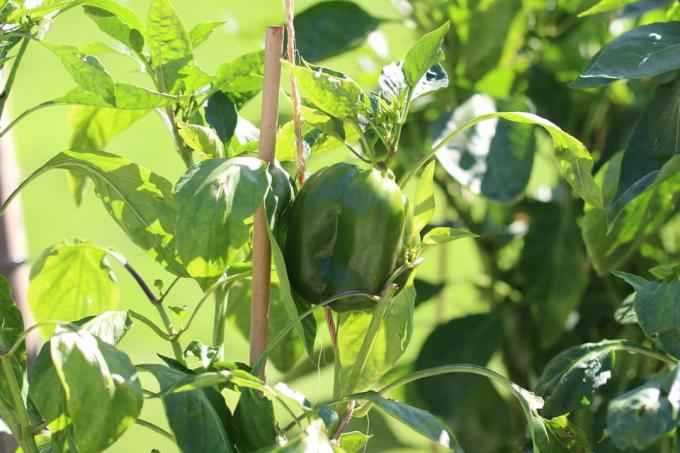
Table of contents
- mixed culture
- Suitable plant neighbors
- Bad plant neighbors
- Site requirements of peppers
The mixed culture is not suitable for every plant. However, pepper plants are among those that can develop better with proper neighbors than alone. We present 12 recommended planting partners.
mixed culture
Planting different varieties together has been practiced for generations. Farmers and gardeners recognized earlier that plants mutually influence each other when they grow in the same area. The combination of different varieties can have a positive but also negative effect on the individual plants.
The advantages of mixed culture:
- efficient use of the available space
- mutual defense against pests and diseases
- support pollination
- Release of soil improvers by certain species
- Reduction of soil erosion
- Protection against the soil drying out due to permanent vegetation
- Contribution to the preservation of biodiversity
- reduction of weeds
A notice:
Avoid mixed cultures of plants from the same family, as these are attacked by the same pests and can suffer from the same diseases. Combine plants that can repel the neighbors' pests.
Suitable plant neighbors
basil(Ocimum basilicum)

- Basil is just as heat-loving as all types of peppers.
- The herb attracts bees and pollinating insects.
- Basil protects neighboring plants from powdery mildew.
- The whitefly and cabbage whites give it a wide berth.
- This benefits the other partners in the bed.
borage(Borago officinalis)
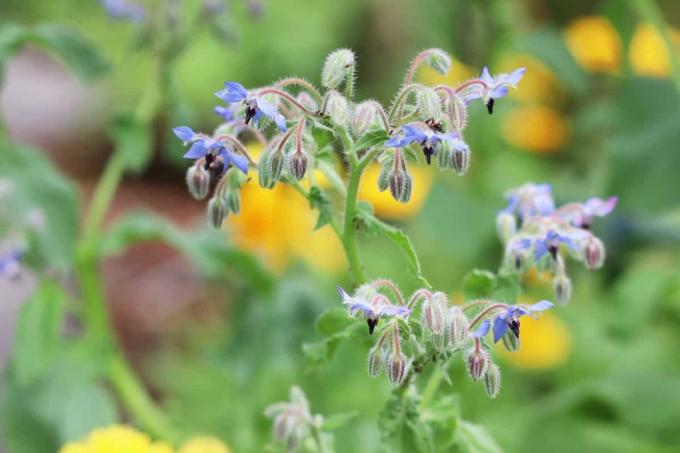
- Anyone who has a garden should not do without borage.
- With its blue flowers, the spice and medicinal plant looks very beautiful.
- It magically attracts bees and bumblebees and the pollination of peppers and other plants in the garden is assured.
- The popular kitchen herb helps to improve the soil.
dill(Anethum graveolens)
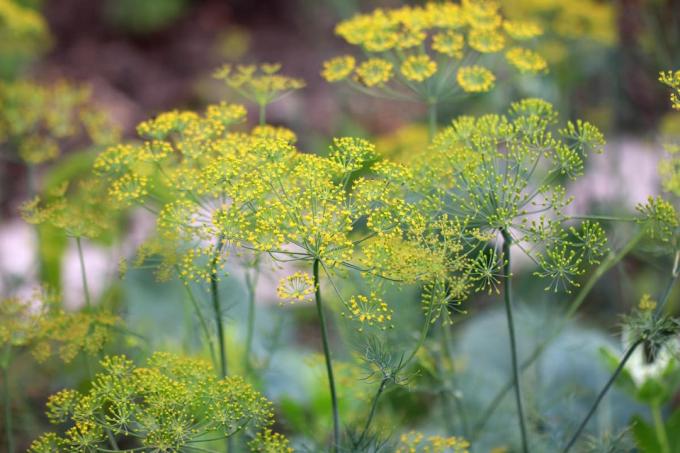
- Dill on the pepper bed keeps aphids away.
- The spice herb is one of the weak consumers.
- It has a long taproot.
- A nutrient competition with the pepper plants is not to be feared.
cucumbers(Cucumis sativus)
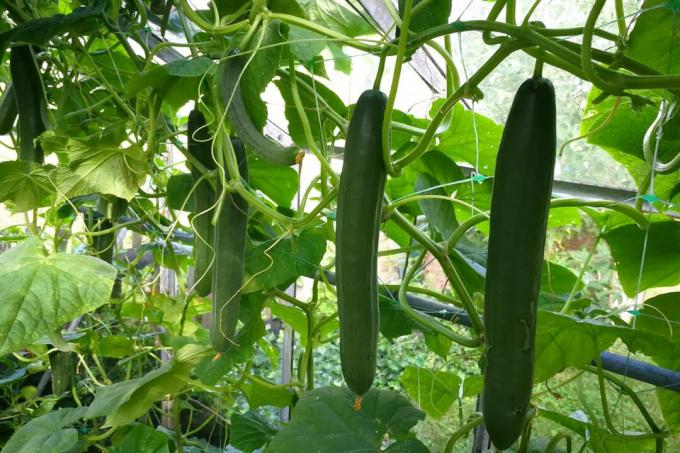
- Cucumbers and peppers complement each other not only in the salad.
- The two crops also have a positive effect on the vegetable patch.
Tip:
The vitamin C content of ripe peppers is unmatched by any other vegetable?
chamomile(Matricaria chamomilla)
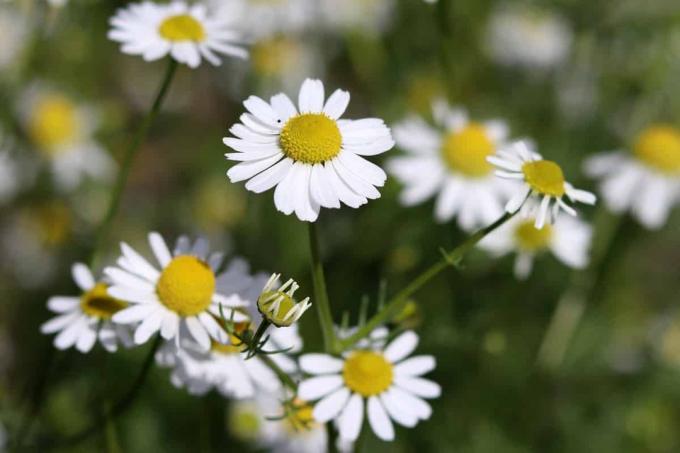
- Real chamomile, like all types of peppers, loves the sun.
- It attracts bees and other flower-visiting insects.
Garlic(Allium sativum)
- Garlic and Capsicum get along very well in a mixed culture on a bed.
- The hot onion plant protects against fungal attack and contributes to the healthy development of the pepper plants.
cabbage(brassica)
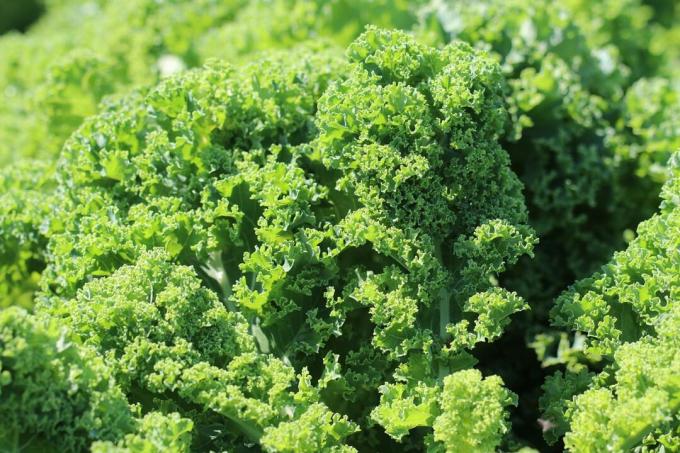
- Cabbage and peppers are perfect partners.
- Almost all types of cabbage are heavy feeders.
- The demands on the location are similar to those of pepper plants.
- Heat, sun, regular water and fertilizer are required.
carrots(Daucus carota subsp. sativa)
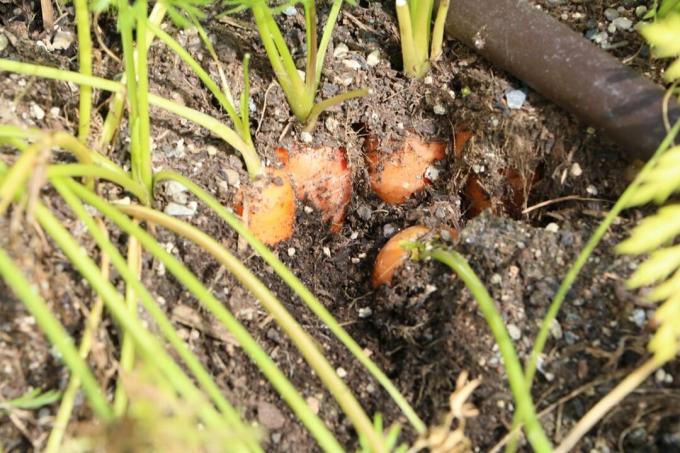
- Carrots grow well in well-shaded, loose, humus-rich soil with few weeds.
- In a mixed culture with pepper plants and onions, weeds hardly stand a chance.
marigold(calendula)

- Marigolds should not be missing in any garden.
- The pretty yellow and orange flowers attract bees, butterflies and bumblebees as pollinators for other vegetable and fruit trees.
- Marigolds keep slugs, wireworms, nematodes, and other pests away.
- The decorative plant requires only a few nutrients, so it does not compete with useful plants.
rosemary(Salvia rosmarinus)
- Rosemary is a popular bee food plant.
- Carrots, cabbage and capsicum can develop splendidly in partnership with the spice and medicinal herb.
marigold(tagetes)
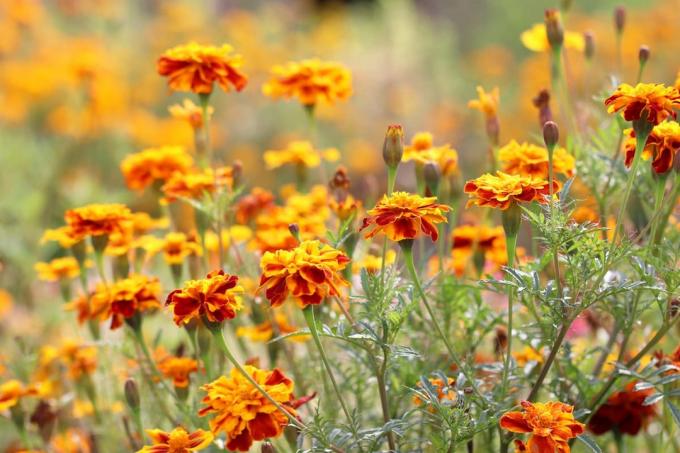
- The marigolds with the bright flowers are not only pretty to look at, they have a positive effect on plants in the neighborhood.
- They attract beneficial insects and drive away nematodes, ants and whiteflies with their scents.
- Tagetes have similar requirements to the location as pepper plants.
tomatoes(Solanum lycopersicum)

- Many dishes contain both tomatoes and peppers.
- The two types of vegetables rich in vitamins also get along very well on the bed.
- They have similar demands on the location.
Bad plant neighbors
For a paprika mixed culture not suitable are:
- eggplants (Solanum melongena)
- beans (Phaseolus vulgaris)
- Peas (Pisum sativum)
- fennel (Foeniculum vulgare)
- Nasturtium (Tropaeolum)
- potatoes (Solanum tuberosum)
- Leek (Allium ampeloprasum)
- Beetroot (Beta vulgaris)
Site requirements of peppers
- paprika (capsicum) belongs to the heavy feeders.
- It needs nutrient-rich soil.
- The location should be as warm and sunny as possible.
- Make sure that the pepper plants do not dry out.
- In summer they need to be watered regularly.
- Fertilize with organic fertilizer or nettle manure.
 Home editorial office
Home editorial office
Find out more about paprika, chili & Co

Grow peppers yourself from seeds: instructions
Growing peppers yourself is easy, because the popular vegetable can easily be propagated from seeds. In this article you will find out how the sowing works best.

Sowing peppers: sowing according to the lunar calendar 2023
Red, yellow or green, pointed or round, mild or hot, paprika is one of the most popular types of vegetables. Would you like to grow the healthy vegetables in your own garden? If you pay attention to the needs of the plant and the lunar calendar, you will benefit from a rich harvest!

Cut/pinch out the pepper plant | 5 tips for pruning
Sweet, hot, pointed or plump, which hobby gardener does not like them, the crispy fresh or fiery peppers. Be it the mildly fruity sweet peppers or the spiced peppers with different degrees of spiciness. Cultivation and care are the same. There is only a small difference in the cut.

Chili cultivation: Instructions for sowing and pricking out
If you want to harvest interesting chili instead of boring peppers, you have to grow the young plants yourself. Seeds are available cheaply in stores, and specialized online shops in particular are well stocked. After that, it's just a matter of taking the right step at the right time.

Prick the peppers: Instructions | Soil and pot size basics
To germinate, many pepper seeds may be close together. But as soon as the seedlings rise from the ground and form the first green leaves, they should be separated from each other. Transplanting them into their own pots gives them more space and therefore better growing conditions.
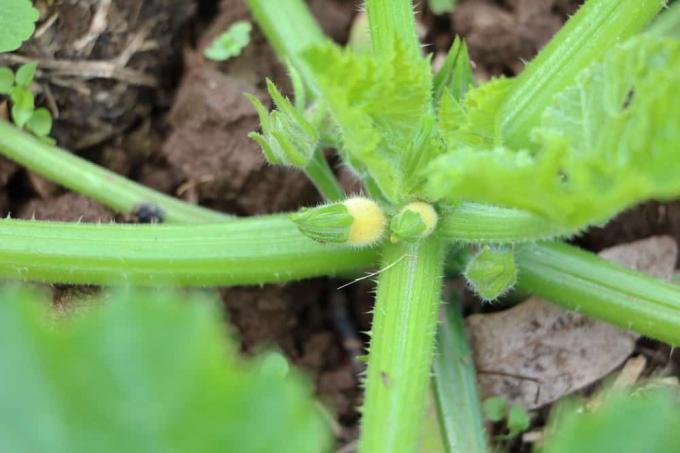
Climbing zucchini: plants, care and ideas for zucchini trellises
Climbing courgettes are practical both on the balcony and in the garden, as they only take up little space in width and can therefore be grown in a space-saving manner. Here we reveal what is important when it comes to care.


